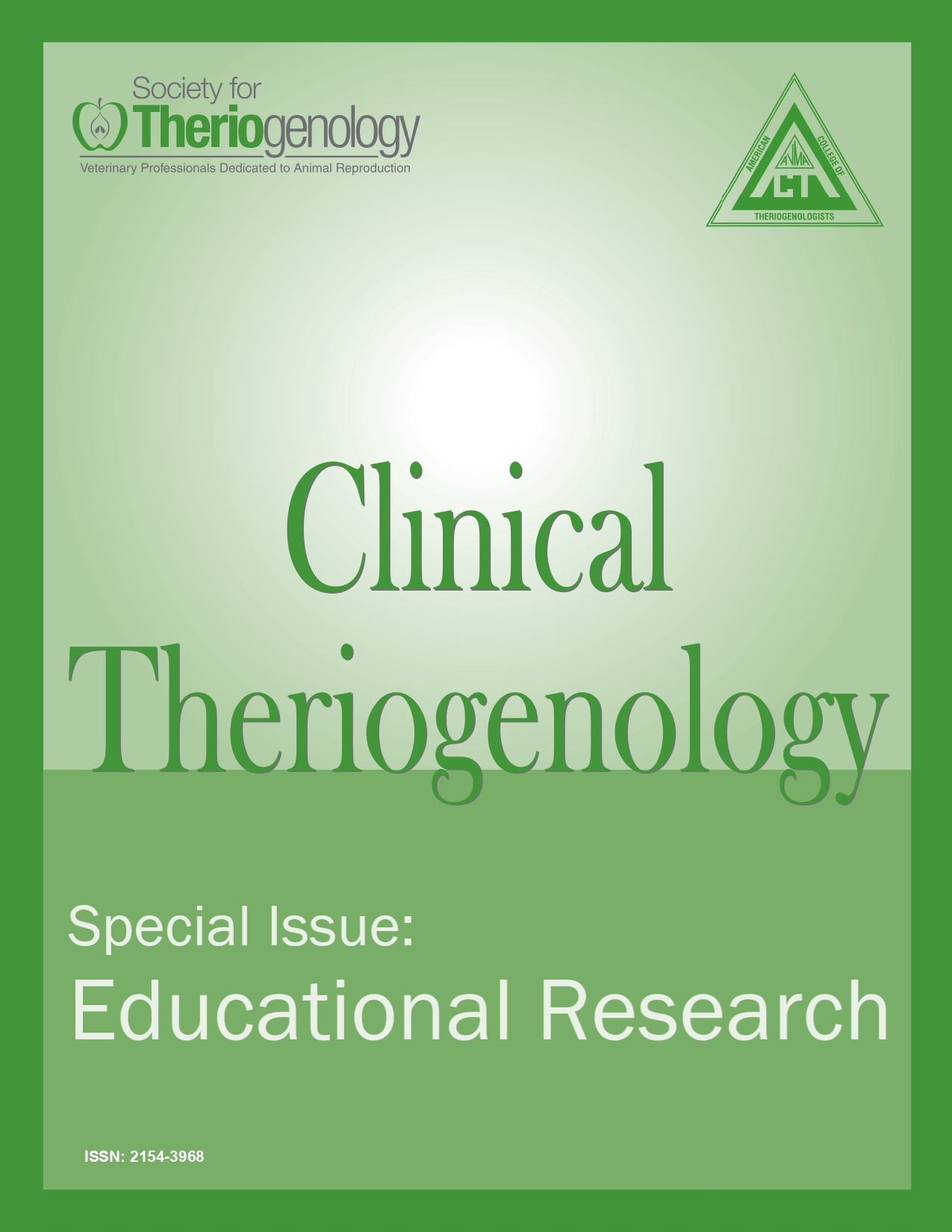Impact of transrectal palpation on teaching mares: a retrospective study*
Abstract
Transrectal palpation (TRP) in mares is considered a noxious and potentially life-threatening procedure, particularly if performed by inexperienced individuals. A retrospective study was conducted using TRP records maintained at the Oklahoma State University College of Veterinary Medicine Ranch. A total of 5,801 TRP were performed from 2019 to 2021 by veterinary students. We hypothesized that in mares the incidence of rectal wall injury and use of intravenous sedation for behavior modification would be low. Additionally, we hypothesized that averse behaviors during TRP would not be a reason commonly cited for mare retirement from the teaching herd. Injury incidence rate was 0.76% (44/5,801) and no injury required surgical correction or resulted in a mare’s death. Sedation was used to minimize averse behaviors 0.34% of the time (20/5,801) and 11 out of 48 mares received sedation. Individual mare use ranged from 1 to 22 years and 10 of 48 mares retired from 2019 to 2021. No retirement was related to averse behaviors or injury experienced during TRP. Findings indicated that student-generated rectal wall injury to teaching mares was at an extremely low rate of occurrence. We also suggest that in live-animal TRP laboratories, animal welfare is not compromised, and it should not be cited as a reason to minimize live animal use within the veterinary curriculum.
Downloads
References
2. Camillo F, Fanelli D, Rota A, et al: Teaching palpation of the mare’s uterus and ovaries to veterinary medicine students using a herd of embryo recipients. J Equine Vet Sci 2020;89:103087. doi: 10.1016/j.jevs.2020.103087
3. Speights KS, Tipton BA, Bubb RR, Clark-Price SC, et al: Quantitative analysis of stress following student palpation per rectum in the mare. National Veterinary Scholars Symposium. 2022:285.
4. Ille N, Aurich C, Aurich J: Physiological stress responses of mares to gynecologic examination in veterinary medicine. J Equine Vet Sci 2016;43:6–11. doi: 10.1016/j.jevs.2016.04.010
5. van Vollenhoven E, Fletcher L, Page PC, et al: Heart rate variability in healthy, adult pony mares during transrectal palpation of the reproductive tract by veterinary students. J Equine Vet Sci 2017;58:68–77. doi: 10.1016/j.jevs.2017.08.013
6. Bond RL, Midla LT, Gordon ED, et al: Effect of student transrectal palpation on early pregnancy loss in dairy cattle. J Dairy Sci 2019;102:9236–9240. doi: 10.3168/jds.2019-16515
7. Berghold P, Möstl E, Aurich C: Effects of reproductive status and management on cortisol secretion and fertility of oestrous horse mares. Anim Repro Sci 2007;102:276–285. doi: 10.1016/j.anireprosci.2006.11.009
8. Guinnefollau L, Bolwell CF, Gee EK, et al: Horses’ physiological and behavioural responses during undergraduate veterinary practical teaching classes. Appl Anim Behav Sci 2021;241:105371. doi: 10.1016/j.applanim.2021.105371
9. van Vollenhoven E, Grant CC, Fletcher L, et al: Salivary glucocorticoid and fecal glucocorticoid metabolite concentrations in pony mares during transrectal palpation of the reproductive tract by veterinary students. J Equine Vet Sci 2018;70:7–12. doi: 10.1016/j.jevs.2018.07.010
10. Nagel C, Ille N, Aurich J, et al: Teaching of diagnostic skills in equine gynecology: simulator-based training versus schooling on live horses. Theriogenology 2015;84:1088–1095. doi: 10.1016/j.theriogenology.2015.06.007
11. Annandale A, Annandale CH, Fosgate GT, et al: Training method and other factors affecting student accuracy in bovine pregnancy diagnosis. J Vet Med Educ 2018;45:224–231. doi: 10.3138/jvme.1016-166r1

This work is licensed under a Creative Commons Attribution-NonCommercial 4.0 International License.
Authors retain copyright of their work, with first publication rights granted to Clinical Theriogenology. Read more about copyright and licensing here.





